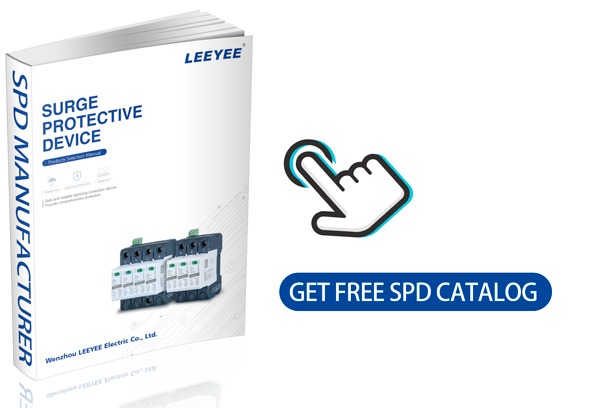Power surges can strike unexpectedly, damaging your valuable electronics and leading to costly repairs or replacements. Without adequate protection, these surges can create significant risks for your home. Understanding residential surge protective devices (SPDs) can help you safeguard your equipment effectively.
Surge protective devices (SPDs) provide essential protection for your home’s electrical system by diverting excess voltage during power surges. Learn how they work and why they are vital for your safety.
Let’s explore the different types of residential surge protective devices, their benefits, and how to choose the right one for your home.
What Are Surge Protective Devices?
Surge protective devices (SPDs) are designed to protect electrical equipment from voltage spikes caused by power surges. These surges can occur due to various reasons, including lightning strikes, power outages, or equipment malfunctions. SPDs work by diverting excess voltage away from sensitive electronics, preventing damage and ensuring safe operation.
Types of Surge Protective Devices
- Whole-House Surge Protectors: Installed at your main electrical panel, these devices protect all circuits in your home. They provide a primary line of defense against large surges, such as those from lightning or utility issues. Whole-house SPDs are ideal for comprehensive protection.
- Point-of-Use Surge Protectors: These devices plug directly into your wall outlets and offer protection for specific appliances or electronics. Common examples include power strips with built-in surge protection, which are often used for computers, televisions, and other sensitive devices.
- Type 1 and Type 2 SPDs: Type 1 devices are installed between the utility pole and the meter, while Type 2 devices are installed at the service entrance or main panel. Type 1 SPDs protect against external surges, while Type 2 devices provide additional protection for internal surges.
Benefits of Using SPDs
- Equipment Protection: SPDs protect your electronics from voltage spikes, preventing costly damage. This protection extends the lifespan of your devices, saving you money in the long run.
- Safety Enhancement: By reducing the risk of electrical fires and equipment failures, SPDs contribute to a safer home environment. They help prevent hazards associated with power surges.
- Insurance Benefits: Some insurance companies may offer discounts for homes equipped with surge protection. This can lead to savings on your homeowner’s insurance premiums.
Choosing the Right SPD
When selecting a surge protective device for your home, consider the following factors:
- Joule Rating: The joule rating indicates how much energy the SPD can absorb before it fails. Higher ratings provide better protection. Look for devices with a joule rating suitable for your needs.
- Response Time: A fast response time is crucial for effective surge protection. Look for SPDs with a response time of less than one nanosecond to ensure your devices are protected instantly.
- Indicator Lights: Many SPDs come with indicator lights that show their operational status. These lights help you monitor whether the device is functioning correctly.
- Clamping Voltage: This is the voltage level at which the SPD will begin to conduct excess energy. Lower clamping voltage means better protection for your devices.
Installation Considerations
- Professional Installation: For whole-house SPDs, professional installation is recommended. An electrician can ensure that the device is installed correctly and safely, providing optimal protection.
- Regular Maintenance: Check your surge protective devices periodically to ensure they are working effectively. Some devices may have a limited lifespan and need replacement after absorbing a certain amount of energy.
- Combine Protection: Using both whole-house and point-of-use SPDs offers layered protection for your home. This combination enhances safety and ensures that all devices are covered.
Common Misconceptions
- SPDs Guarantee Protection: While SPDs significantly reduce the risk of damage from surges, they do not guarantee complete protection. It’s essential to remain aware of the potential for damage from extreme surges.
- Only Lightning Causes Surges: Many people believe that lightning is the only cause of power surges. In reality, surges can also originate from internal sources, such as appliances cycling on and off.
- All Surge Protectors Are the Same: Not all surge protectors offer the same level of protection. Always check specifications to ensure you are selecting a device that meets your needs.
Conclusion
Residential surge protective devices play a crucial role in safeguarding your home’s electrical system and protecting your valuable electronics. By understanding the types of SPDs available and their benefits, you can make informed decisions to enhance your home’s safety.
Investing in surge protection will help you avoid costly repairs and ensure a secure environment for your devices. Stay proactive about your home’s electrical safety by considering the right surge protective devices for your needs.
About LEEYEE:
Established in 2009, LEEYEE is a specialized manufacturer of surge protective devices (SPDs). We own the certificates of CE, CB, ISO9001, and TUV. In addition, we support customization options for color appearance, parameters, and logos. Welcome to consult for product catalogs and inquiries, you can contact us via email at devin@cnspd.com.

